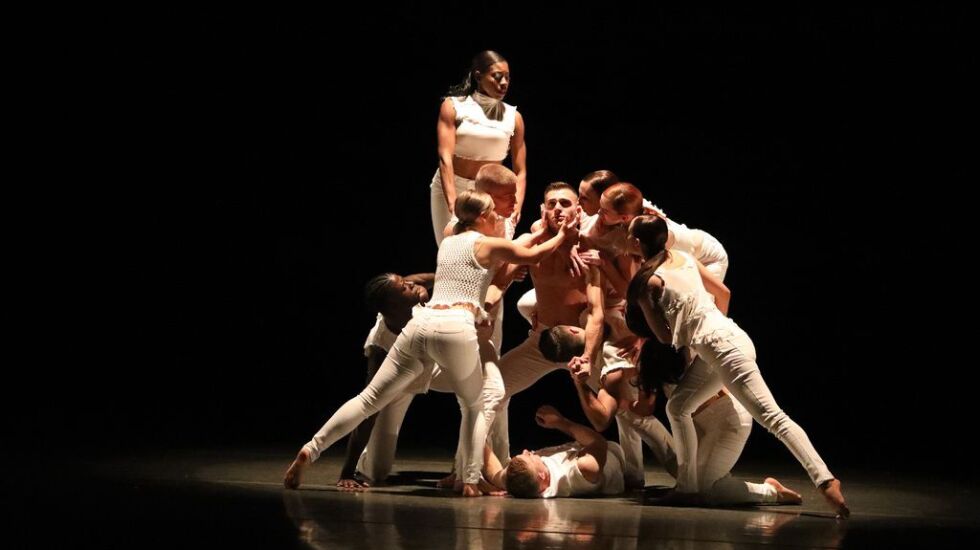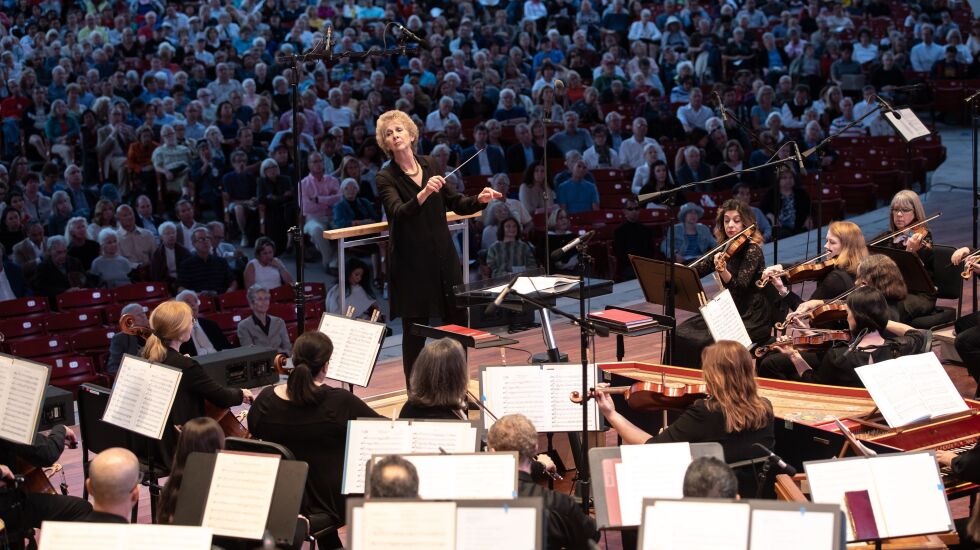
During Linda-Denise Fisher-Harrell’s 1989-92 tenure as a performer with Hubbard Street Dance Chicago, the company was itinerant, constantly shuffling among venues, including the Goodman Theatre, CIBC Theatre (formerly the Shubert Theatre) and the Lyric Opera House (formerly the Civic Opera House.)
But when she returned in 2021 as Hubbard Street’s artistic director, Fisher-Harrell was delighted the company had found a home at the Harris Theater for Music and Dance, becoming one of 12 founding resident companies when the Millennium Park facility opened in 2003.
When it tours, Hubbard Street never knows exactly what it will encounter at each new venue.
“But the Harris just makes things really easy as far as the production elements and all the things we need to build work and mount it and have it look the way choreographers dream,” Fisher-Harrell said.

The Harris will celebrate its 20th anniversary Sept. 9 with “Harris Fest: Music + Dance in the Park.” The free, all-day event will take place in the Pritzker Pavilion and other locations around Millennium Park, with performances and workshops by many of Harris’ resident companies, including the Chicago Gay Men’s Chorus, South Chicago Dance Theatre, Chicago Opera Theater and Giordano Dance Chicago.
Lori Dimun, the venue’s president and chief executive officer, said the Harris decided to mark 20 years versus waiting for the more typical quarter-century milestone in part so it could also celebrate its reemergence and that of its 30 resident companies following the COVID-19 shutdown.
“It felt like a moment to talk about what we’re doing but also really uplift the amazing work that is happening and the companies that are affiliated with the theater,” Dimun said.

During its two-decade existence, the 1,500-seat theater has become an essential downtown venue, with performances, rehearsals and other events taking place there an average of 135 days a year and drawing some 100,000 people a year. Its annual budget has nearly tripled from $3.3 million in 2002-03 to $9 million in 2023-24, and its staff has quadrupled from seven to 28.
“Where would the arts in Chicago be without the Harris?” said Terrell Johnson, executive director of the Chicago Philharmonic, one of the theater’s resident companies. “Because for organizations like ours, we really rely on that venue. And I know our patrons rely on that as a space to hear music and see dance.”
A 1990 study commissioned by the MacArthur Foundation identified the need for a multi-purpose theater that would fill an important niche between smaller neighborhood venues and larger arts facilities like the 3,875-seat Auditorium Theatre or 2,522-seat Orchestra Hall.
A group of arts, philanthropic and government leaders worked together to make such a venue a reality, with the theater’s primary benefactors, Joan and Irving Harris, donating $15 million to the $52.7 million project and providing a construction loan of $24 million.

The Harris is inconspicuously tucked onto the north side of Pritzker Pavilion at 205 E. Randolph. Because of height restrictions in Millennium Park, most of the building is unusually submerged, with patrons entering a glass-walled lobby and descending stairs and riding elevators to seating on the lower three stories.
In October 2013, the theater announced its “Imagine” campaign, which raised $38 million for multiple needs, including upgrades to the facility’s elevators and lobby space as well as backstage improvements. More recently, it spent another $1.5 million on sound upgrades, video-equipment acquisition and minor lighting enhancements.

“I’m kind of geeking out on all the things production-wise that the Harris has the capacity to do,” said Fisher-Harrell.
“When you talk about teching a piece and making sure you have all the bells and whistles, the Harris has that. They make those investments, which are really important to us.”
What sets the Harris apart from many multi-tenant venues is its resident companies, which were the reason the theater was built, and they continue to be the facility’s main focus. They get the first dibs on performance dates and they pay a subsidized daily rental rate of $6,000, a fee that has not gone up since 2016, and get other support including four professional-development workshops for company leaders each year.
“We have such a unique relationship with those companies that call the Harris home, and it’s something that you don’t see replicated across the country,” said Dimun, who joined the Harris as chief operating officer in 2011 and began her current post in August 2020.

Helping to enhance that relationship is Harris’ Committee on Resident Companies, which is co-chaired by Johnson, who also serves as an ex-officio member of the theater’s board of trustees.
“It’s really important that the artists have a voice — the folks that are using the space,” Johnson said.
Perhaps the biggest change to the Harris came in 2006 when it presented the New York City Ballet, the company’s first return visit at the time in more than 25 years. That event has grown into five annual programming series under the moniker of Harris Theater Presents, including the fast-growing “Mix at Six,” which features concerts that begin at 6 p.m., last around an hour and cost just $15.
“That was a huge leap,” Dimun said of Harris Theater Presents. “That was an extraordinary shift in the overall operating model of the organization.”

The programming philosophy has been simple: Present what audiences can’t find anywhere else in Chicago. The theater has built relationships with artists like choreographer Akram Khan, whose works have been performed by the English National Ballet at the Harris, and next his eponymous company makes its Harris debut with “Jungle Book reimagined” on Nov. 9-11.

What do the next 20 years hold for the Harris?
Dimun hopes the tight relationships the theater has with its resident companies will continue and that additional companies will join the fold (Red Clay Dance Company and Mandala South Asian Performing Arts are new for 2023-24), but there is plenty of room for change in other ways.
“I think we’re always going to continue to evolve to meet the needs of those companies,” Dimun said, “and that means we really can’t be stagnant, we can’t just kind of exist as who we are and just do what we do the same way everyday.”







